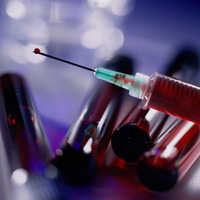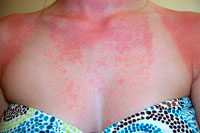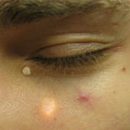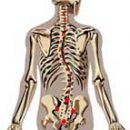The diagnosis of congenital immunodeficiency with impairment of the T-system of immunity is based on the use of tests of the first and second level. Special role to be applied to the use of skin samples with a number of microbial antigens.
Content
Tests for assessing the activity of the T-system of immunity
The main final product of T-lymphocytes are cytokines, but systems for their definition are still lowered by practical laboratories. However, the assessment of the functional activity of the T-system of immunity represents the task of exceptional importance, as it can be lowered, sometimes even essentially, with the normal number of T cells.
Tests of the 1st level of estimation of the T-system of immunity include the definition:
- The total number of lymphocyte
- Percent and absolute number of mature T-lymphocytes
To level 2 tests for estimating the T-system of immunity include the definition:
- cytokine products (interleukin, interferon, tumor necrosis factor, etc.)
- Proliferative response to specific antigens, most often on diphtheria and tetanus anatoxins
- Allergic reaction with skin tests with a number of microbial antigens
Without a doubt, the definition of cytokine products lymphocytes and macrophages should become the main methodological method in immunodiagnosis of diseases associated with impaired immune system. The identification of cytokines in some cases will make it possible to more accurately determine the diagnosis of the disease and the mechanism of the immune disorder.
Application of skin samples
 Special, is the question of using skin trials in the diagnosis of T-cell immunodeficiency. Today, they are used as level 1 tests to evaluate the T-system of immunity. This is due to two circumstances. First, skin samples are the simplest and at the same time informative tests that allow to estimate the functional activity of T-lymphocytes. Positive skin tests with some microbial antigens with a high degree of probability make it possible to eliminate the presence in patient t-cell immunodeficiency. Secondly, for skin samples, which include the main antigens for determining T cell immunity. This allows in severely controlled conditions to estimate the functional activity of the T-system of immunity.
Special, is the question of using skin trials in the diagnosis of T-cell immunodeficiency. Today, they are used as level 1 tests to evaluate the T-system of immunity. This is due to two circumstances. First, skin samples are the simplest and at the same time informative tests that allow to estimate the functional activity of T-lymphocytes. Positive skin tests with some microbial antigens with a high degree of probability make it possible to eliminate the presence in patient t-cell immunodeficiency. Secondly, for skin samples, which include the main antigens for determining T cell immunity. This allows in severely controlled conditions to estimate the functional activity of the T-system of immunity.
Currently, there are problems associated with the definition of cell immunodeficiency. The fact is that cell defects and the state of cellular immunity used to determine as they say. However, the life and the rapid development of science showed that this technique is a little informative, to make any conclusions on the basis of the results obtained with its help, since they do not correspond to reality. Currently, similar studies are carried out using monoclonal antibodies. This technique allows not only to characterize each cell of the immune system, but also more accurately identify any of their defect. Today, the method of monoclonal antibodies is developing out more and more, since receptors are detected, functionally characterizing cells. However, to evaluate their response to the eye, as often we have done, not quite right. For this purpose, a flow cytometry method is used, which allows you to objectively evaluate each cage with the receptor. But, unfortunately, this technique is applied only in large centers, the cost of the apparatus itself is especially large, but it is the most accurate and informative in the diagnosis of immunodeficiency.









